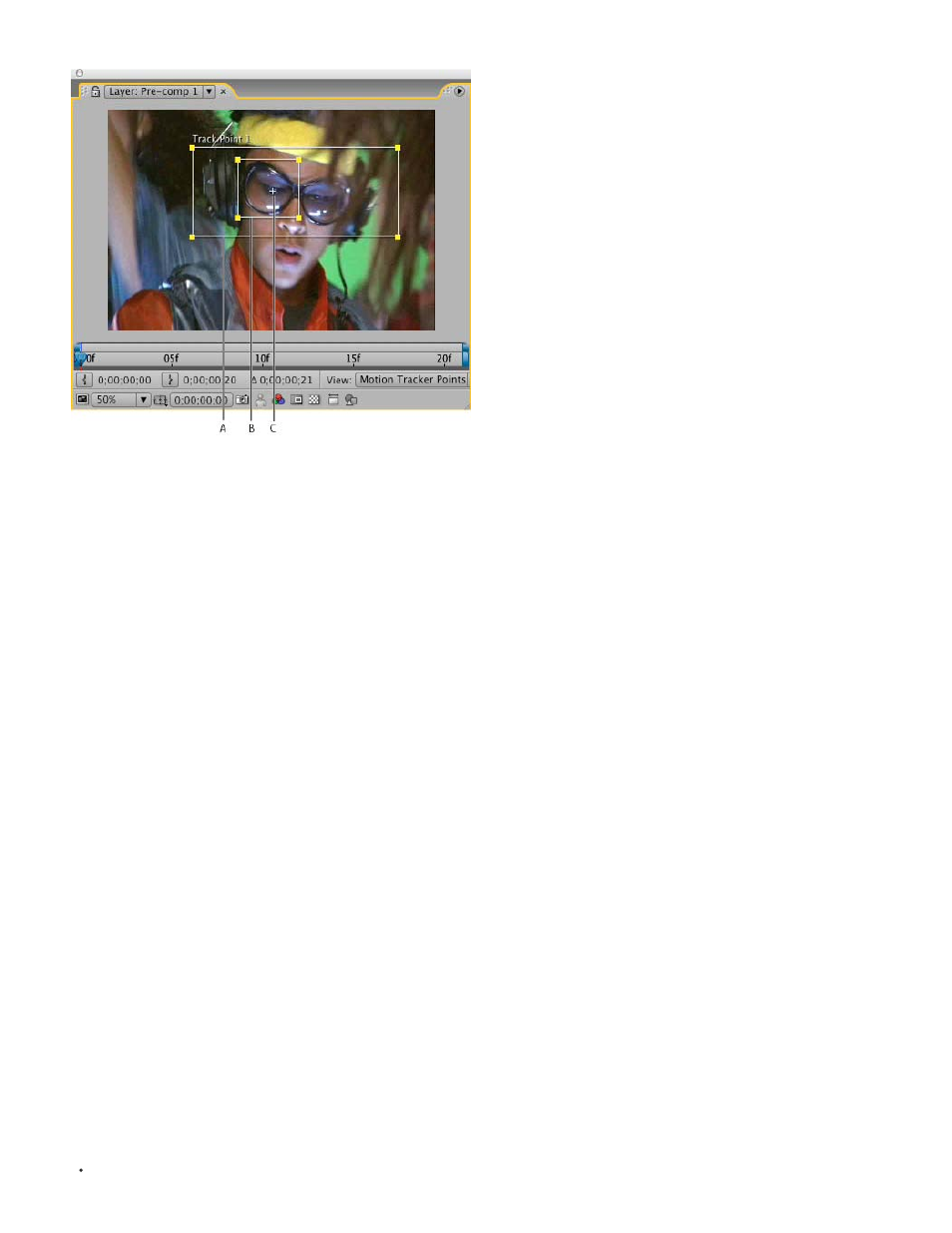Adobe After Effects User Manual
Page 236

Feature region
Search region
Attach point
Note:
Layer panel with track point
A. Search region B. Feature region C. Attach point
The feature region defines the element in the layer to be tracked. The feature region should surround a distinct visual element,
preferably one object in the real world. After Effects must be able to clearly identify the tracked feature throughout the duration of the track, despite
changes in light, background, and angle.
The search region defines the area that After Effects will search to locate the tracked feature. The tracked feature needs to be
distinct only within the search region, not within the entire frame. Confining the search to a small search region saves search time and makes the
search process easier, but runs the risk of the tracked feature leaving the search region entirely between frames.
The attach point designates the place of attachment for the target —the layer or effect control point to synchronize with the moving
feature in the tracked layer.
When you begin tracking, After Effects sets the quality of the motion source layer to Best and the resolution to Full in the Composition and
Layer panels, which makes the tracked feature easier to find and enables subpixel processing and positioning.
After Effects uses one track point to track position, two track points to track scale and rotation, and four points to perform tracking using corner
pinning.
Online resources for motion tracking and stabilization
Curtis Sponsler provides detailed instructions and explanations for tracking and stabilizing motion in a PDF excerpt from his book
Chris and Trish Meyer provide a video tutorial on the
that demonstrates and explains the basics of motion tracking.
After Effects CS5: Learn By Video series shows how to combine motion tracking and the Clone Stamp tool to remove an
object from a scene.
Angie Taylor provides a tutorial on the
shows how to use tracking data and the Clone Stamp tool to apply copies of an
object in a scene while matching a camera move.
Michele Yamazaki provides a tutorial on the
shows how to use motion tracking to obscure a logo in motion footage.
Sean Kennedy provides a set of detailed tutorials on the SimplyCG website that demonstrate advanced motion tracking techniques:
232
